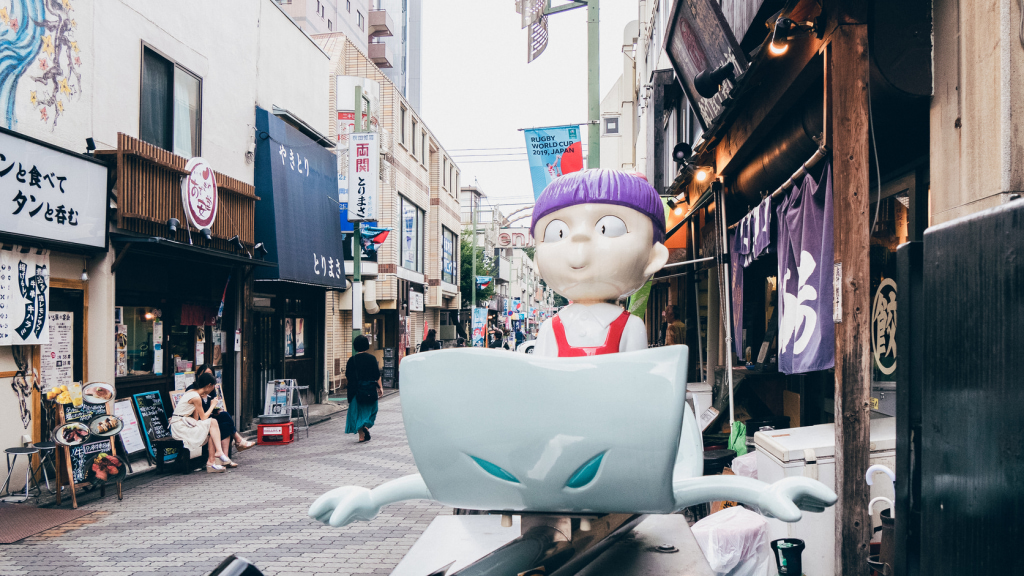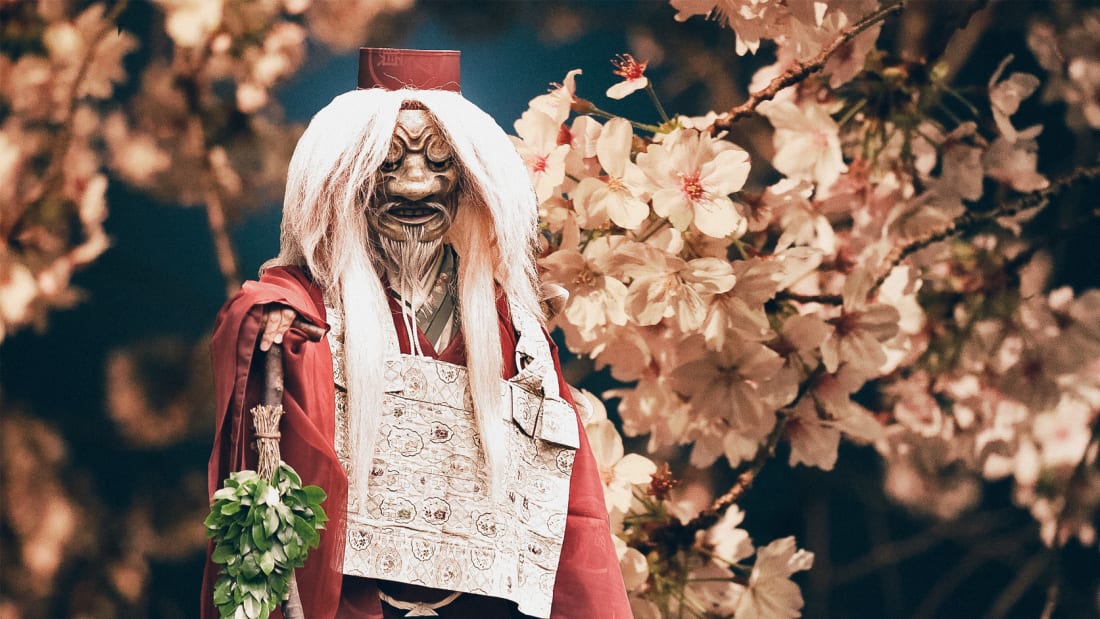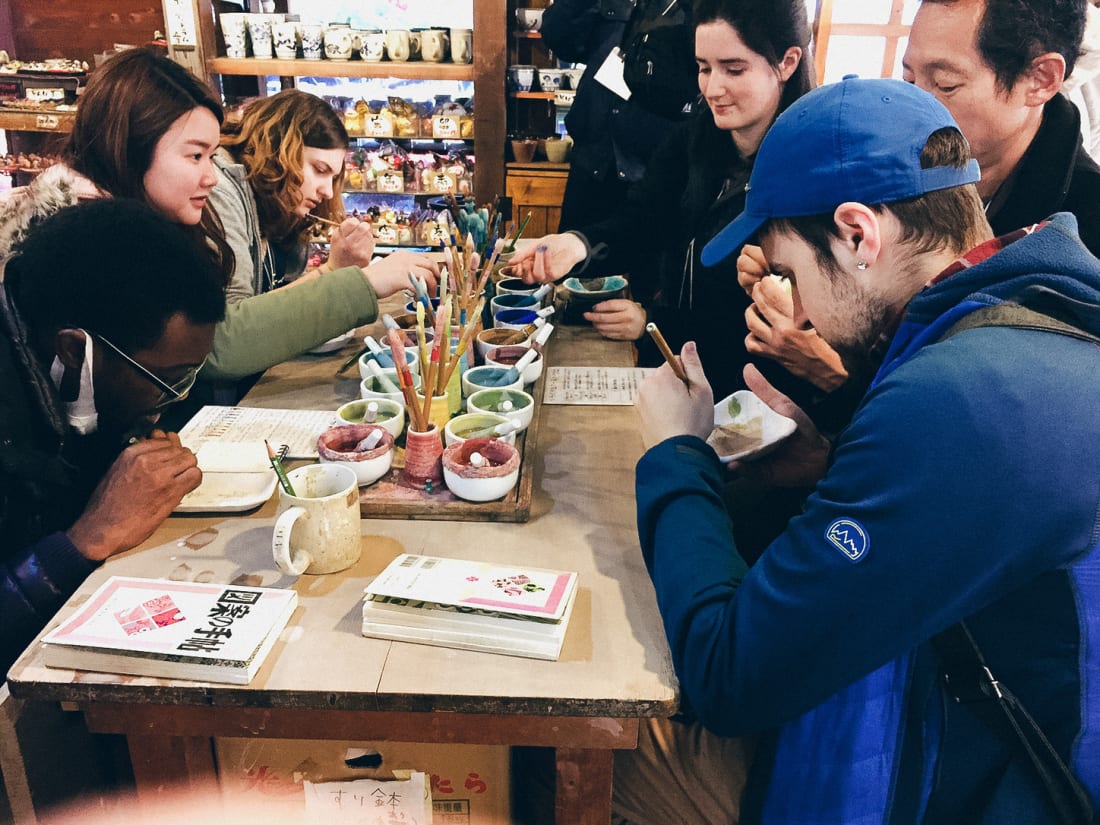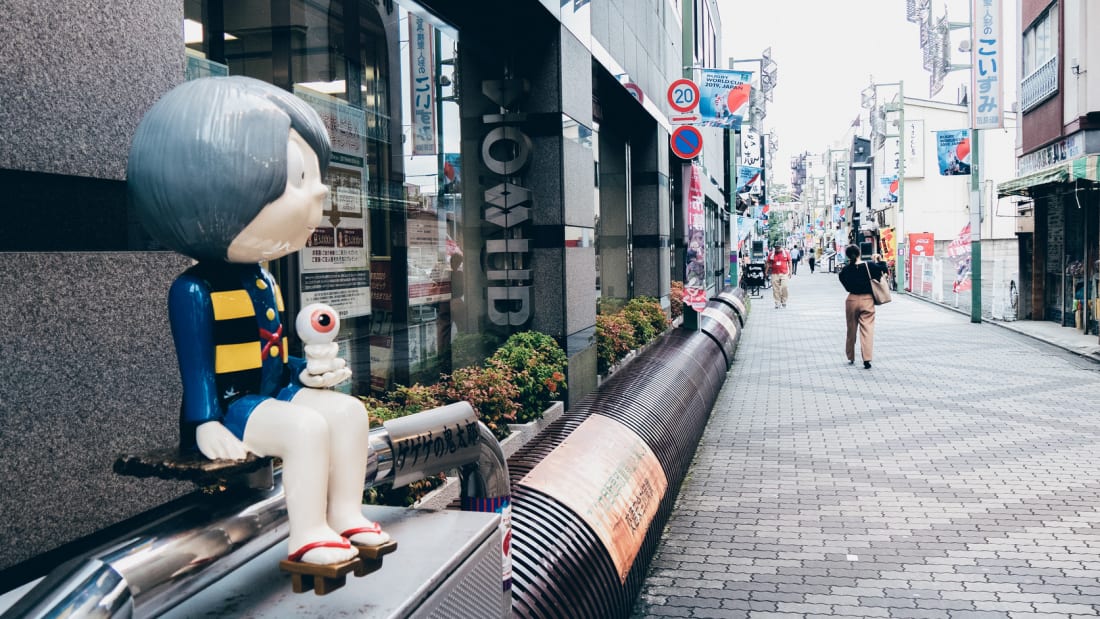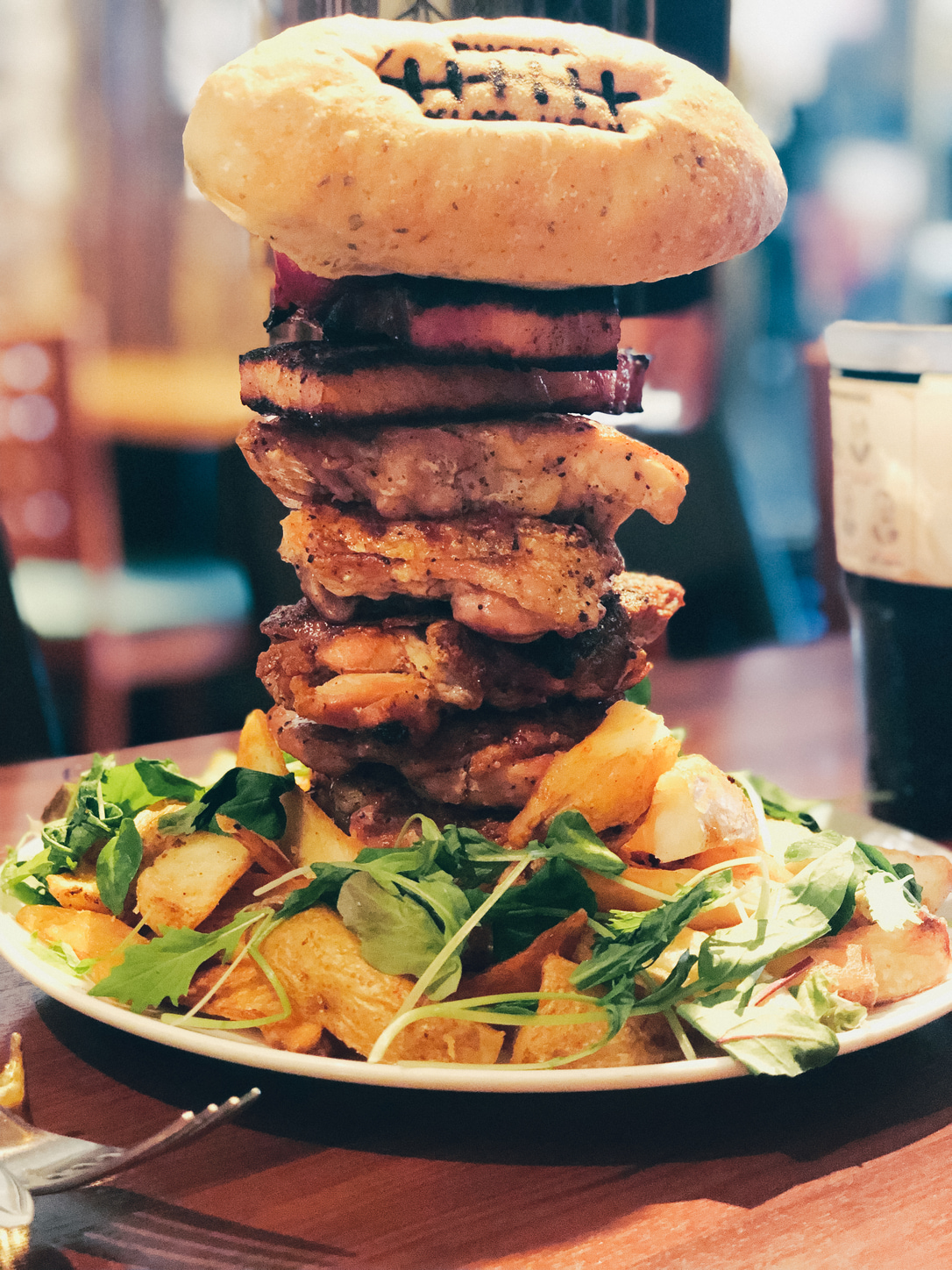The urban atmosphere of Tokyo can feel oppressive to those accustomed to a slower pace of life and a relaxing escape to the western suburb of Chofu is a great way to chill out when the rat race gets too hectic.
Just 15 to 20 minutes by train from Shinjuku Station on the Keio Line, Chofu is known to locals for its history steeped in Japan’s cinema industry, though foreigners will soon know Chofu as Tokyo’s headquarters for the Rugby World Cup.
Before making your plans to visit Chofu, find all the essential information at the new English-language website.
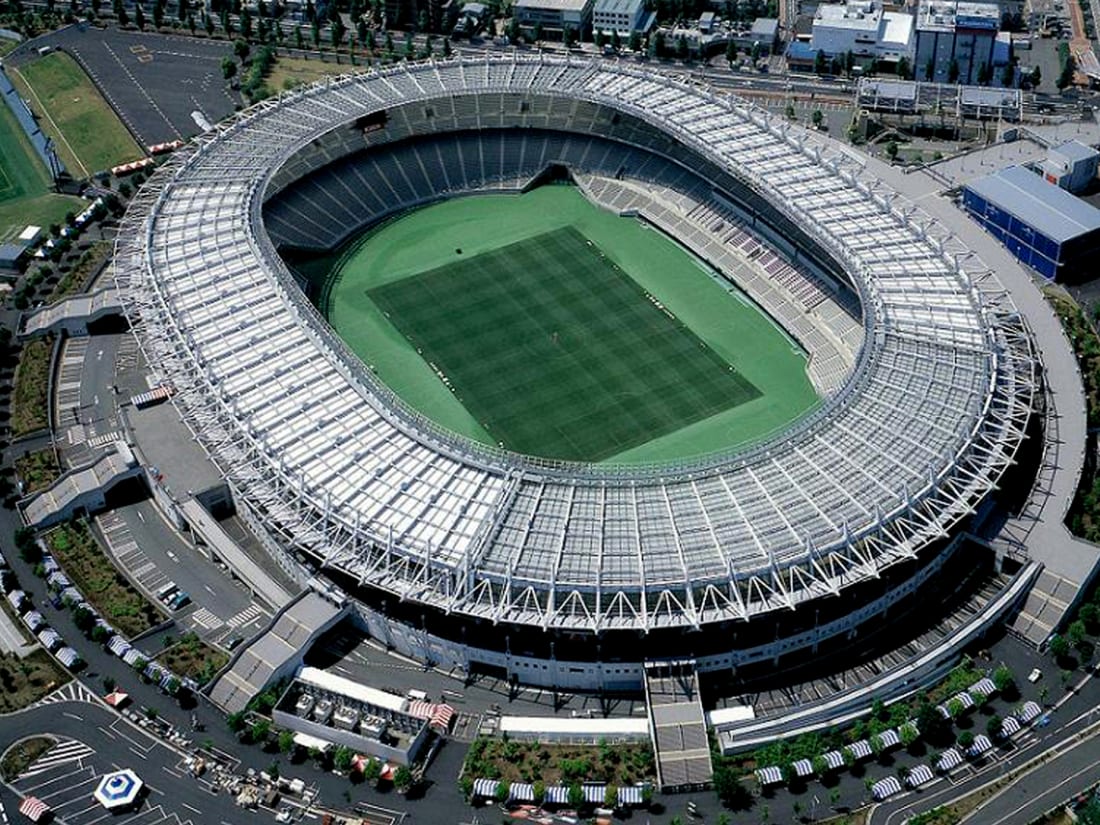
Courtesy of World Rugby
Welcoming Rugby Fans from Around The World
Most notably Tokyo Stadium (Ajinomoto Stadium) located in Chofu is home to the F.C. Tokyo soccer club, but come autumn 2019 it will essentially be the epicenter of world rugby. Eight games will be played here over the course of the tournament, including the first game of the 2019 Rugby World Cup on September 20, which will be preceded by the opening ceremony.
The city of Chofu is embracing its role as host city of rugby’s biggest fans. The expansive courtyard located right outside Chofu Station will be converted into an official Rugby World Cup FanZone. This ad hoc screening area is free of charge, and is capable of hosting thousands of fans who can watch live rugby action on giant LCD screens while enjoying local and international food and drinks.
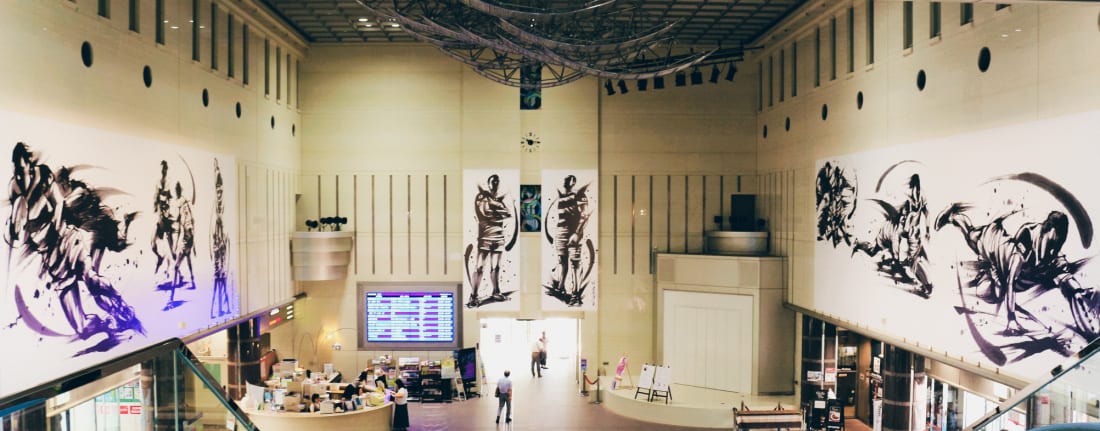
Festivities will also be held at the Chofu City Cultural Center. Inside the grand hall of this elaborately designed building visitors can see immense murals dedicated to rugby, titled “Athlete Wonderwall,”created by celebrated ink brush painter Hidekichi Shigemoto. A specialist in the Japanese traditional art of sumi-e, or black ink, painting, Shigemoto is known for creating eye-catching images that capture the movement of sport.
City of Arts, Culture and Japanese Tradition
To help guests and foreign visitors experience Japanese culture and arts, throughout the year the Chofu City Cultural Center presents Noh Odyssey. Through this program one masterpiece of Noh theatre and two new productions of Kyogen theatre featuring child actors will be performed, with the next production of Shu-Ha-Ri running from September 14 through November 4. English subtitles will be provided during performances, and each production was selected in particular to be easy for beginners to understand and enjoy.
To further immerse yourself in Japanese arts and tradition head to the historic Jindaiji Temple. Built by the monk Manku –according to legend – in 733AD, Jindaiji is the second-oldest Buddhist temple in Tokyo, with Sensoji Temple in Asakusa being the oldest. The grand temple buildings are home to the Statue of Hakuhoh Buddha, the oldest of its kind in eastern Japan.
While at the temple, go to the unique Jindai pottery kiln located in the street leading to the temple (called sando) and choose from more than 100 types of unglazed ceramics – from dishes to piggy banks – and paint original pottery, a process known as rakuyaki. The quaint streets around the temple are lined with traditional soba restaurants, and the nearby Jindai Botanical Garden (run by Tokyo Metropolitan Government) is a world-class facility famous for plum and cherry trees and the biggest rose garden in Tokyo.
Heading closer to the city proper, visit Fudaten Shrine. The mountainous woods behind the approximately 1,940-year-old shrine are home to Chofu’s most popular resident, Kitaro.
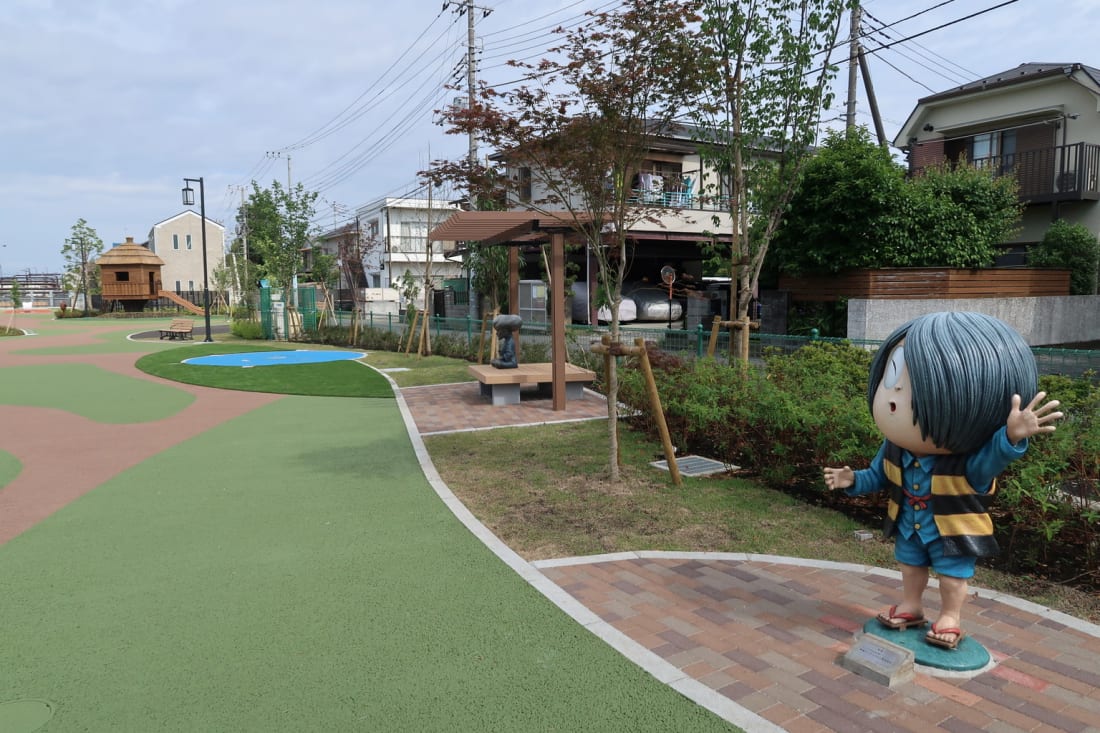
(C)水木プロ
Meet Kitaro and Friends
Following his service in World War II, Shigeru Mizuki moved to Tokyo for work opportunities. Mizuki chose to settle amongst the bucolic landscape of Chofu in 1959. Fascinated by yokai – mythological spirits and ghosts – the talented artist began drawing characters, and his manga comic series GeGeGe no Kitaro became a nationwide phenomenon.
Mizuki lived in Chofu for more than 50 years, passing away in 2015, but Kitaro and the popular yokai characters live on, and can be seen everywhere in Chofu. The theme shop and café Kitaro Chaya located near Jindaiji Temple sells a wide variety of goods, snacks and sweets – all dedicated to the ghostly denizens of GeGeGe no Kitaro. Meanwhile, the Tenjin-dori shopping street leads to Kitaro’s home, Fudaten Shrine. Between the many izakaya and restaurants lining the atmospheric street are five statues depicting favorite characters from GeGeGe no Kitaro.
This May the city opened Kitaro Hiroba park. Chofu Station reopened two years ago following an extensive renovation project. The train tracks of the Keio Line were moved underground, and this whimsical park was built where the above-ground tracks once ran. From a climbing wall to a treehouse, every fun facet of the park pays homage to Kitaro and his friends. At Fudaten Shrine, an annual festival dedicated to Kitaro is held every year around the anniversary of Mizuki’s passing on November 30 (this year from November 23 to December 1), with a stamp rally, crab soup (Mizuki’s hometown in Tottori is famous for crab) and more.
Hollywood of the Orient
Chofu is located along the Tama River, and in 1933, the first movie studio opened in the city. Many movie scenes have been filmed along the scenic river, film studios soon began clamoring to Chofu because the city was also famous for the clarity and purity of its water source. Clean water is necessary for processing film, and the Tama River and Chofu’s many springs made clean water readily available.
In 1954, Nikkatsu, one of Japan’s oldest film studios, opened its Chofu studio, at that time the largest modern film studio in the Asia Pacific Region. In addition to prop shops, costume shops, etc., more than 40 companies related to to the filmmaking industry were located in Chofu during Japan’s Golden Era of film. Known as the Hollywood of the Orient, Japan’s most famous film stars and directors could be seen casually strolling the streets of Chofu.
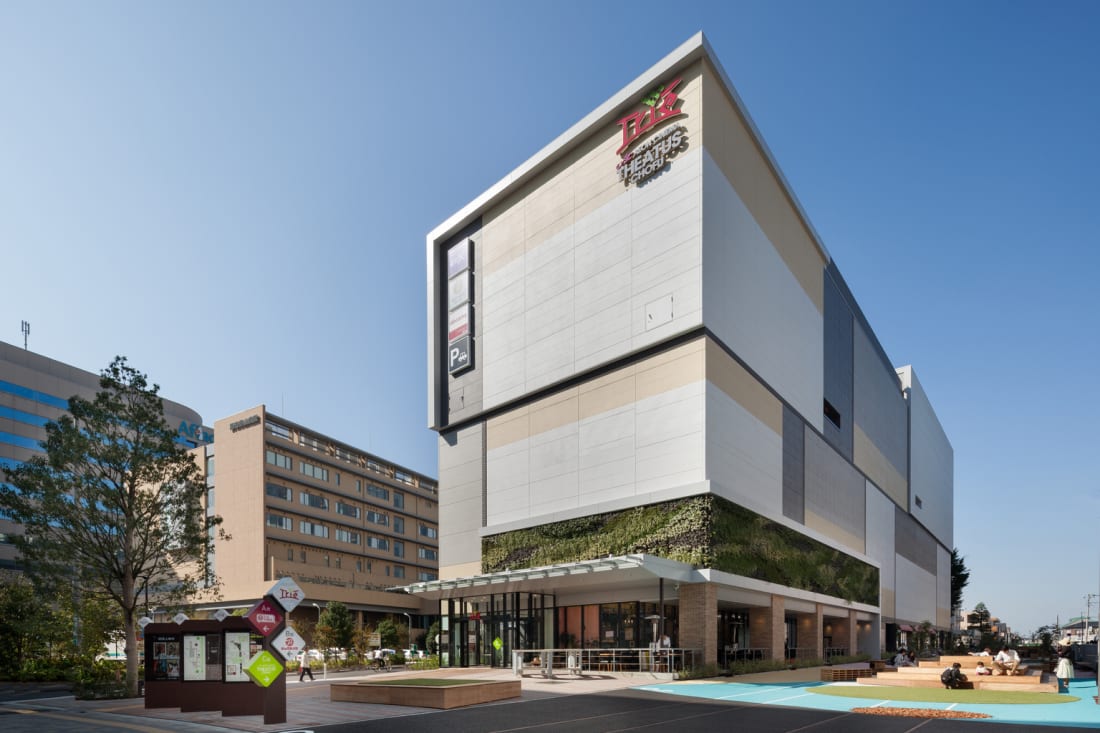
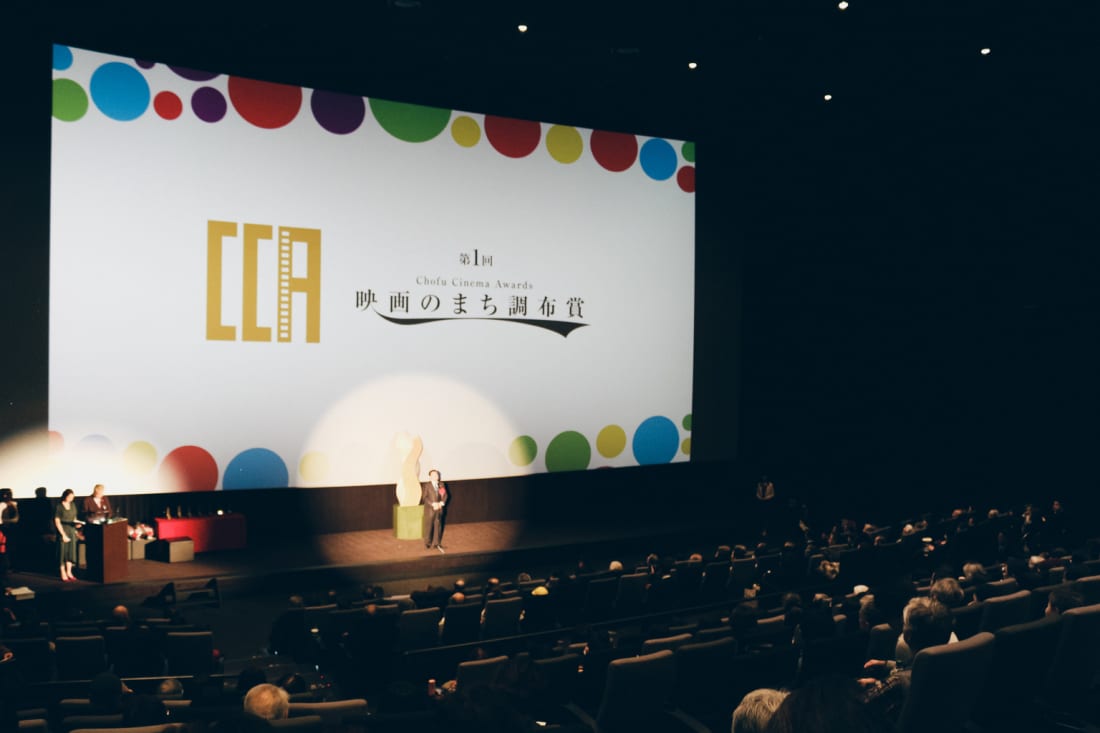
The heyday has long died down, though two film studios still call Chofu home. In conjunction with the reopening of the train station (which has many signs and decorations honoring Chofu’s cinema history), the cinema complex Aeon Cinema Theatus Chofu also opened in 2017. The next-generation movie theater is the biggest in the Tama area of Tokyo, with 11 screens and a 4DX theater that offers an immersive cinema experience.
Honoring the city’s film tradition, the Chofu Cinema Festival: City of Film is held every year (the next festival is February 14–March 8, 2020). While showcasing films, local prop and costume shops also get involved with the festival, and the local community becomes part of the attraction, as several children’s events are held.
Heaping Helpings of Local Cuisine
Chofu’s clean water isn’t only beneficial to the film industry. It also enhances the flavors of the local foods and drinks. One native beverage that can be found throughout Japan is a light, refreshing lager-style drink called Hoppy. Created in 1948 as a beer-style drink that patrons mix with shochu and ice, the concoction allowed Chofu izakaya owners to avoid paying certain taxes. Hoppy is still poured out of the tap at most Chofu bars.
Even more unique to Chofu is the style of dining called dekamori. Many diners from overseas may be bewildered by the tiny portions they receive at Tokyo restaurants. That is not the case in Chofu. Restaurants throughout Chofu, serve mountain-sized helpings of dishes from Thai curry to gigantic burgers stacks of waffles that can easily serve three people. The katsu curry at the restaurant Wakamatsuya is served on a metal plate that can cover the whole table.
Through November 4, Chofu hosts a dekamori restaurant rally. Collect a stamp card and visit any of the 15 participating restaurants and then eat dekamori, collect stamps and win prizes. If taking on the dekamori challenge, be sure to make a reservation beforehand.
Head to Ishii izakaya on the Tenjin-dori shopping street for cola highballs, lemon sours and the local delicacy of fresh offal, sourced straight from the butcher. For a little pick me up to help you enjoy Chofu’s characters, events and spirits of all kind, stop by Sarutahiko Coffee and have a soul-soothing cup of coffee brewed right before your eyes.
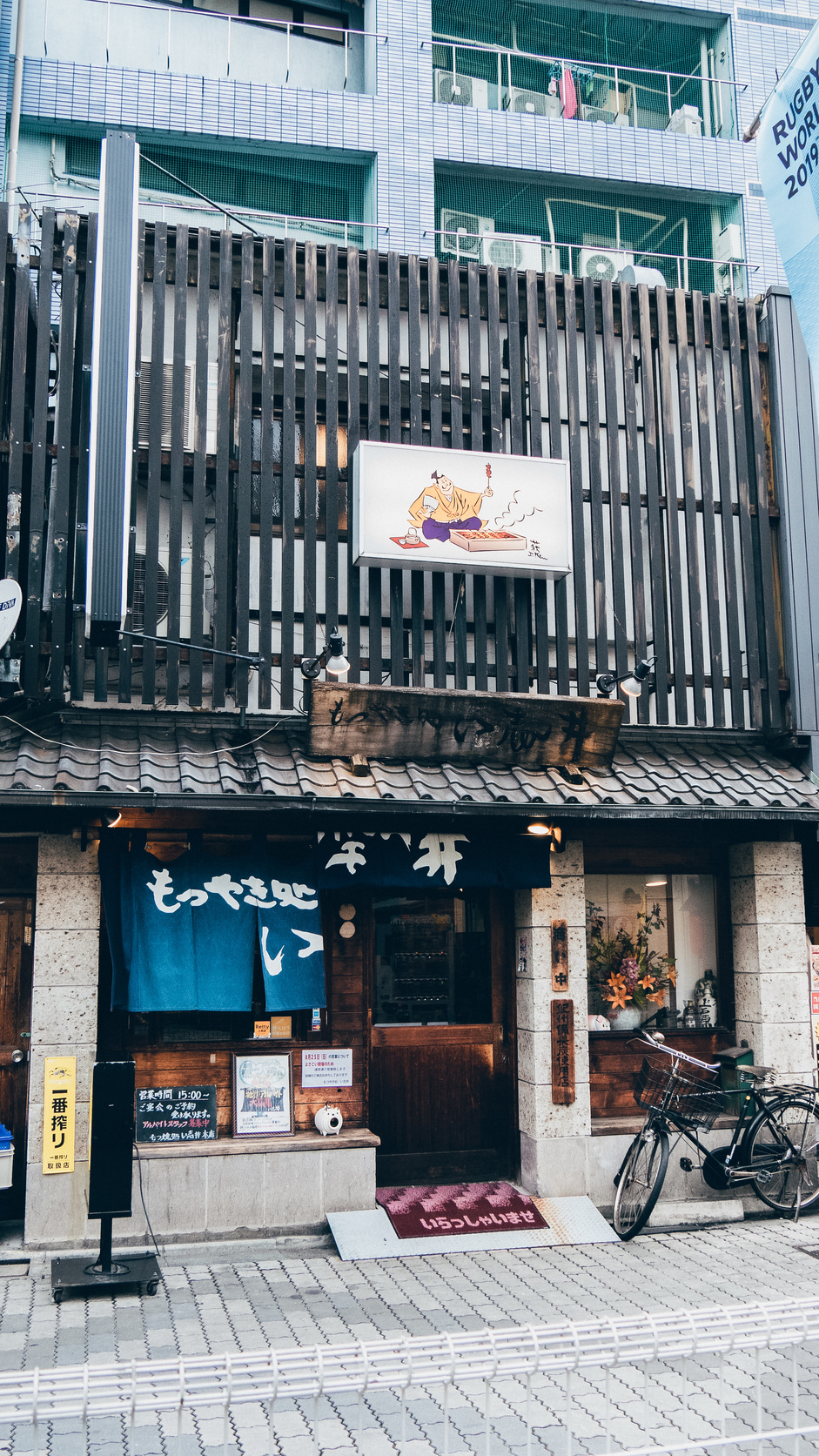
Find more information at hyperurl.co/TWChofuCity
[Sponsored Content]

